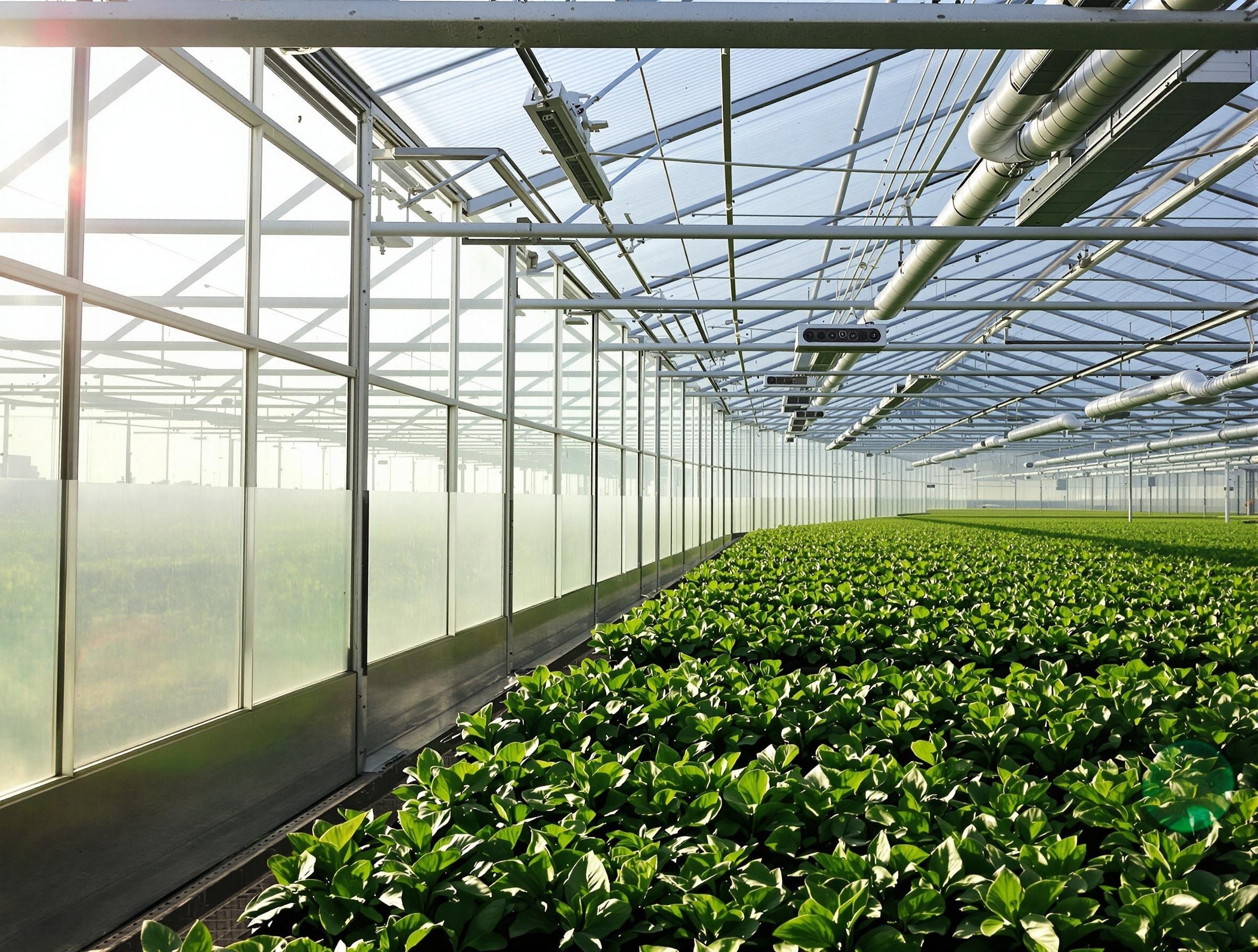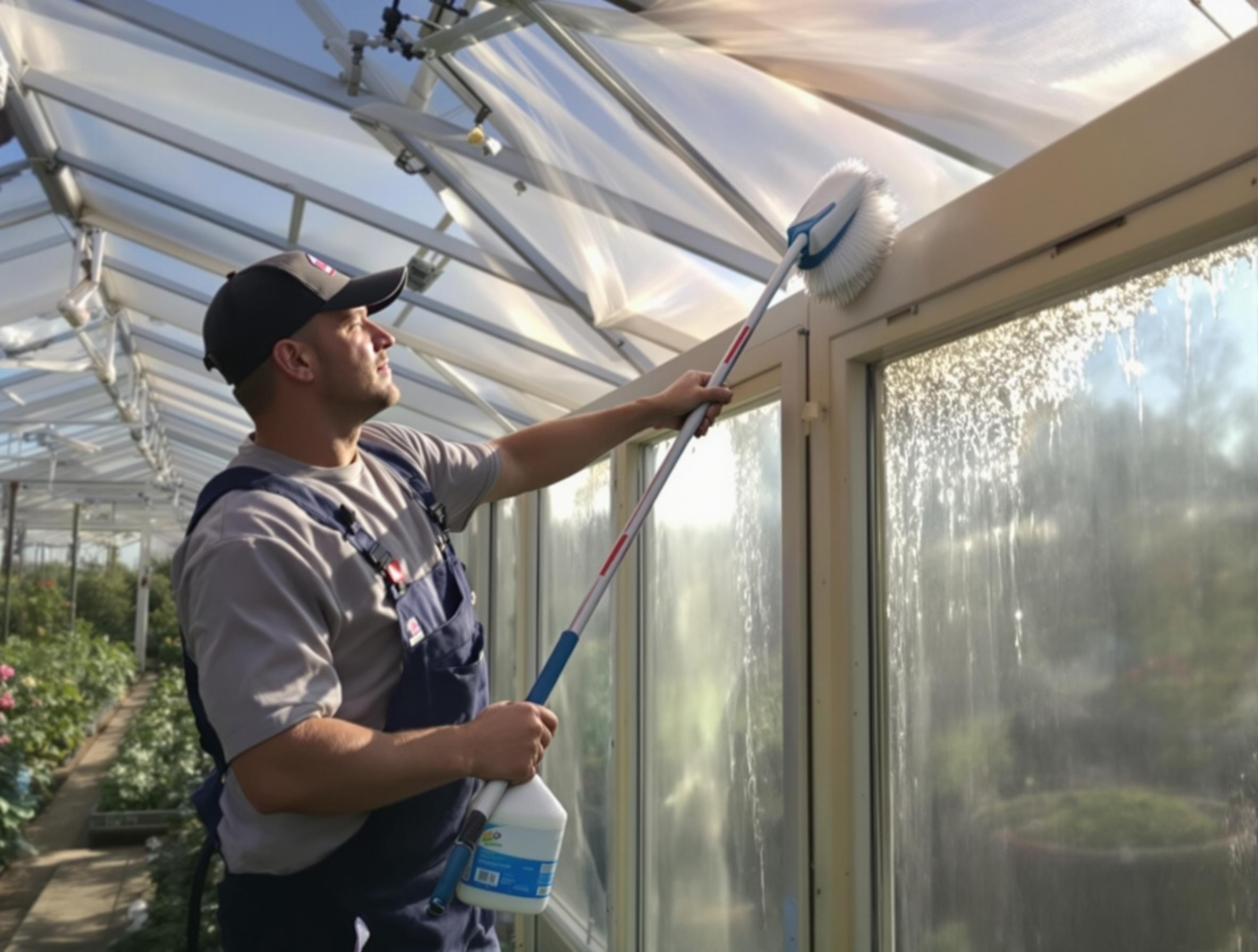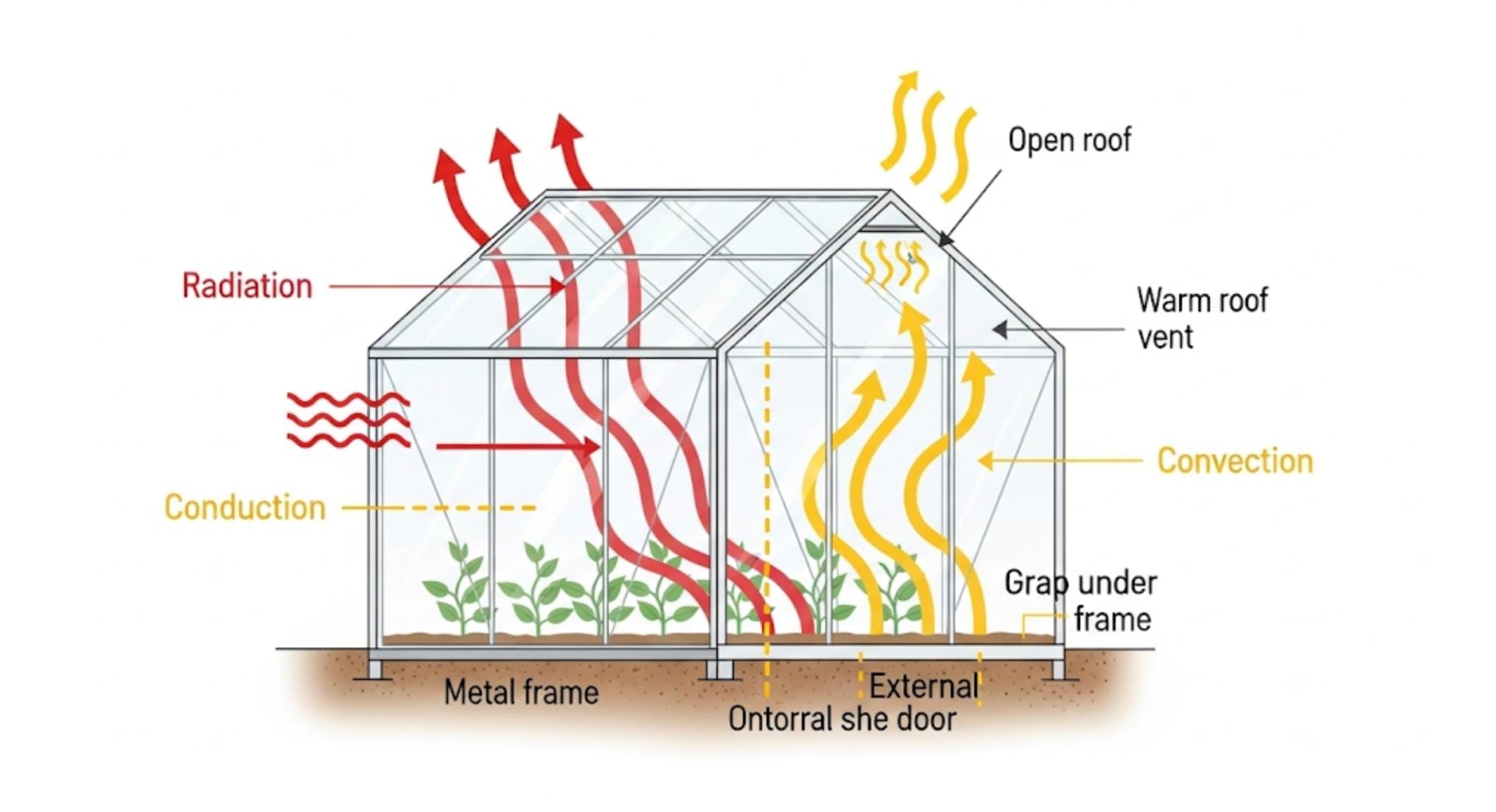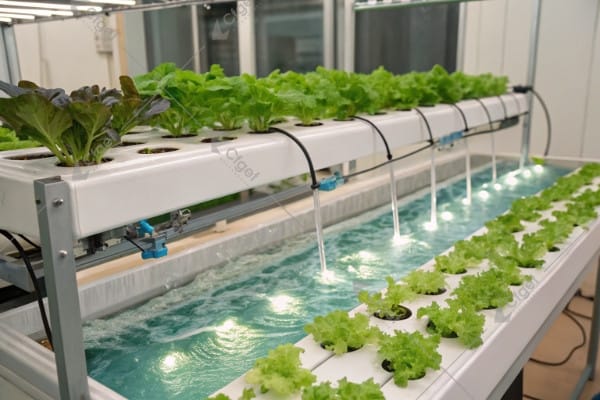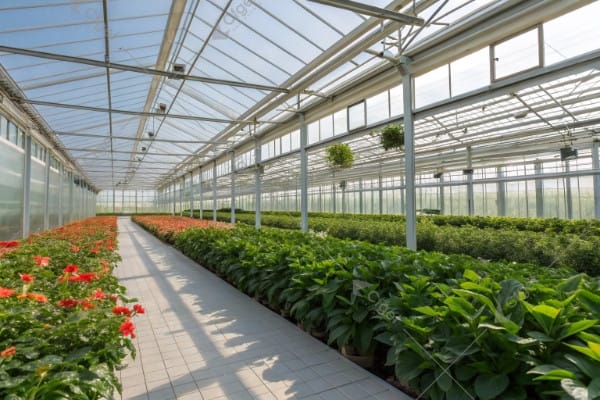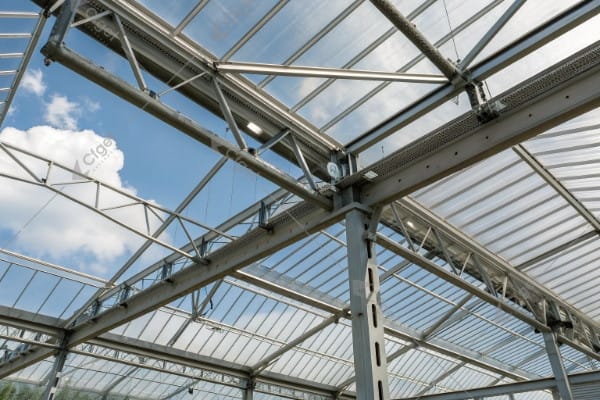Growing plants year-round can be challenging when weather conditions are harsh. Temperature fluctuations, extreme cold, and unpredictable climate patterns make consistent cultivation nearly impossible without proper protection. Glass greenhouses offer a solution.
Glass greenhouses provide superior light transmission while creating controlled environments for optimal plant growth. With proper construction and maintenance, glass structures can outlast other greenhouse materials while offering aesthetic appeal and professional growing capabilities for commercial operations.
I’ve been working with greenhouse structures for over 28 years at CFGET, and I’ve seen firsthand how the right glass selection can make or break a growing operation. Glass greenhouses represent premium structures in commercial agriculture for good reasons. They combine durability with optimal growing conditions when designed correctly.
You might like:——Designing the Perfect Cannabis Greenhouse: Climate Control, Lighting & Structure?
You might like:——Winter Greenhouse Heating Strategies: Keeping Your Plants Warm Efficiently?
What Type of Glass is Best for Greenhouse Use? (Tempered, Float, Low-E)?
Choosing the wrong glass for your greenhouse can result in wasted energy, poor plant growth, and even dangerous structural failures. I’ve seen operations lose entire crops because their glass couldn’t handle extreme weather events or provided insufficient insulation.
Tempered glass offers 4-5 times the strength of regular glass and breaks into small, less dangerous pieces. Float glass provides exceptional clarity and even thickness at lower costs. Low-E glass contains special coatings that minimize heat loss while maintaining light transmission.
I remember visiting a client in Central Asia who had installed regular window glass in their greenhouse. After a severe hailstorm, they faced devastating damage that could have been prevented with tempered glass. Their recovery costs far exceeded what tempered glass would have cost initially.
Each glass type offers distinct advantages for greenhouse applications, and your choice should align with your specific growing needs, budget constraints, and local climate conditions. Understanding these differences helps make informed decisions for long-term success.
Comparative Analysis of Greenhouse Glass Options
| Glass Type | Strength | Light Transmission | Insulation Value | Cost | Best Application |
|---|---|---|---|---|---|
| Tempered | High (4-5x regular glass) | 85-90% | Moderate | $$$ | Areas with extreme weather, safety concerns |
| Float | Moderate | 90-92% | Low | $$ | Budget projects, mild climates |
| Low-E | Moderate | 70-80% | High | $$$$ | Cold climates, energy efficiency focus |
| Double Glazed | Moderate-High | 70-85% | Very High | $$$$$ | Extreme cold regions, maximum insulation needs |
| Diffused | Moderate | 80-85% (scattered) | Varies | $$$$ | Plants needing even light distribution |
When selecting glass for your greenhouse, consider these factors carefully. For example, one of our European clients opted for Low-E glass despite its higher initial cost. Their energy savings reached 40% annually compared to standard glass, resulting in complete return on investment within four years. Meanwhile, their plants showed more consistent growth patterns without the temperature fluctuations they previously experienced.
The thickness of glass also matters significantly. While 3mm glass might suffice for small hobby structures, commercial operations typically require 4mm or thicker glass to withstand environmental pressures and provide adequate insulation. I always recommend clients factor in their specific growing region’s wind loads, snow accumulation potential, and temperature extremes when making this decision.
Maintaining and Cleaning Glass Panels in a Greenhouse?
Dirty glass can reduce light transmission by up to 30%, directly impacting plant growth and yield. I’ve witnessed operations struggle with diminished harvests simply because of inadequate cleaning protocols. Regular maintenance is not just aesthetic—it’s essential for productivity.
Proper glass maintenance requires quarterly deep cleaning with appropriate solutions, regular checks for sealant integrity, and prompt repairs of any damage. A maintenance schedule that includes both interior and exterior cleaning ensures maximum light transmission and extended glass lifespan.
I once worked with a tomato grower in Southeast Asia who transformed his struggling operation by implementing a simple monthly cleaning schedule. By removing accumulated dust, algae, and mineral deposits that had built up over years, he increased his yields by nearly 20% in a single growing season.
The cleaning process for greenhouse glass involves more than just water and soap. Environmental factors like hard water, industrial pollution, and biological growth require specific approaches. For best results, soft water should be used, as hard water can leave mineral deposits that build up over time and become difficult to remove.
Effective Cleaning Methods and Materials
For routine cleaning, a solution of mild soap and water works well for removing dust and light grime. I recommend using a soft brush or microfiber cloth attached to an extendable pole for reaching high panels without scratching the glass. For more stubborn deposits, a mixture of vinegar and water (1:4 ratio) can break down mineral buildup without damaging glass surfaces.
Commercial greenhouse operations should invest in purified water systems for cleaning, as these eliminate the risk of mineral deposits altogether. While this represents an upfront cost, it significantly reduces long-term maintenance needs and extends the clear life of the glass.
Beyond cleaning, regular inspection of seals and framing is crucial. Water infiltration between panels not only reduces efficiency but accelerates deterioration of supporting structures. I advise clients to check sealants annually and replace any that show signs of cracking or pulling away from frames. This simple preventative measure can extend greenhouse lifespan by many years.
Comparing the Insulation Properties of Glass with Alternatives?
Making the wrong choice between glass and alternatives like polycarbonate can result in crushing heating bills or insufficient growing conditions. I’ve consulted with growers who switched materials without understanding the insulation implications and faced crop losses or unsustainable energy costs.
Glass offers superior clarity and longevity but typically provides lower insulation (R-value of 0.9-1.0) compared to polycarbonate (R-value of 1.5-2.0). However, advanced double-glazed glass systems with specialized coatings can achieve R-values up to 4.0, rivaling alternative materials while maintaining glass’s durability advantage.
During a project in Northern Europe, we implemented a double-glazed low-E glass system with a 16mm air gap that transformed a year-round growing operation. Despite temperatures regularly dropping below -20°C outside, the interior maintained stable growing conditions with minimal supplemental heating.
Insulation performance directly impacts operational costs and growing capabilities. While single-pane glass offers poor thermal retention, technological advancements have dramatically improved glass greenhouse efficiency. Understanding these options helps make informed investment decisions that balance initial costs against long-term operational expenses.
Thermal Performance Analysis
The insulation capacity of greenhouse covering materials is measured by U-value (heat transfer coefficient) and R-value (thermal resistance). Lower U-values and higher R-values indicate better insulation properties. Traditional single-pane glass has a high U-value of approximately 5.8 W/m²K and low R-value around 0.9, making it a poor insulator despite excellent light transmission.
By comparison, twin-wall polycarbonate (6mm thickness) achieves a U-value of approximately 3.5 W/m²K with an R-value around 1.6. This represents significantly better insulation, though with reduced light transmission (approximately 80% versus 90% for clear glass).
For modern glass greenhouses, double-glazed systems with special low-emissivity coatings and argon gas filling between panes can achieve U-values as low as 1.1 W/m²K with corresponding R-values around 3.8-4.0. This approaches the insulation performance of triple-wall polycarbonate while maintaining superior clarity and longevity.
One client in Central Asia reduced heating costs by 65% after upgrading from single-pane to argon-filled double-glazed glass, despite the significantly higher initial investment. The system paid for itself within five growing seasons through energy savings alone, not counting increased productivity from more stable growing conditions.
Safety Considerations When Working With Glass Greenhouses?
Ignoring safety protocols with glass structures can lead to serious injuries and liability issues. I’ve helped clients rebuild after catastrophic failures that could have been prevented with proper safety measures and response plans for glass breakage events.
All glass greenhouse operations should implement safety protocols including proper glazing techniques, regular structural inspections, protective gear requirements during maintenance, and emergency procedures for glass breakage. Tempered or laminated safety glass should be used in all human-occupied areas to minimize injury risk.
I’ll never forget visiting a research facility after a severe wind event caused multiple panel failures. Because they had proper protocols in place—including safety glass installation and emergency response training—they avoided any injuries despite significant material damage.
Working with glass greenhouses introduces unique safety challenges that must be addressed through comprehensive planning and regular training. Glass maintenance, replacement, and emergency response require specialized approaches compared to other greenhouse materials.
Comprehensive Safety Approach
Safety begins at the design phase. Proper engineering that accounts for wind and snow loads specific to your region is essential. I recommend clients work with structural engineers experienced in greenhouse design rather than general contractors, as the environmental forces on these structures are unique.
For existing structures, regular inspection schedules focusing on support systems, glass condition, and connection points help identify potential failures before they occur. Look for signs of stress in the glass, such as small cracks starting from edges, and replace panels showing these indicators immediately.
Maintenance staff should receive specialized training for working with glass, including proper handling techniques and personal protective equipment requirements. Cut-resistant gloves, eye protection, and appropriate footwear are minimum standards when working with or around greenhouse glass. For larger operations, having dedicated safety officers who conduct regular audits and training refreshers ensures protocols remain effective.
Emergency response planning is equally important. Having procedures in place for glass breakage incidents—including containment, cleanup, and temporary replacement—minimizes operational disruption and prevents secondary injuries. One commercial grower I worked with created modular emergency panels that could be installed within minutes of a breakage event, protecting crops from sudden temperature changes while permanent repairs were arranged.
Conclusion
Selecting the right glass, maintaining it properly, understanding its insulation properties, and implementing safety measures are essential factors for successful greenhouse operations. With proper planning and management, glass greenhouses offer unmatched growing environments that combine aesthetics with functionality.

